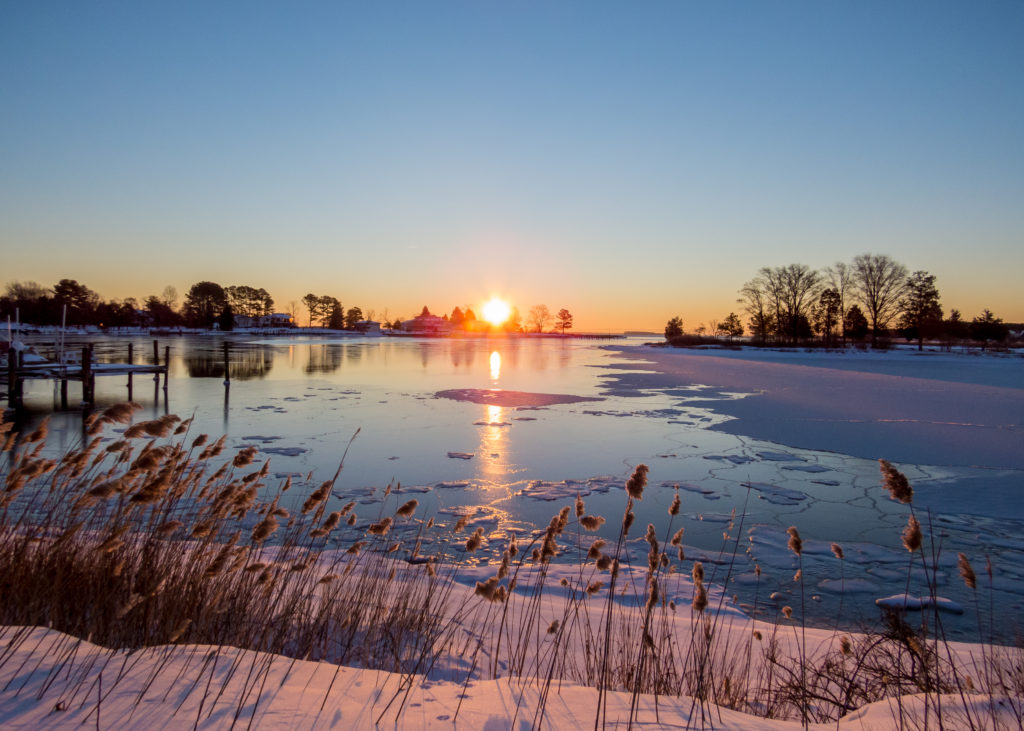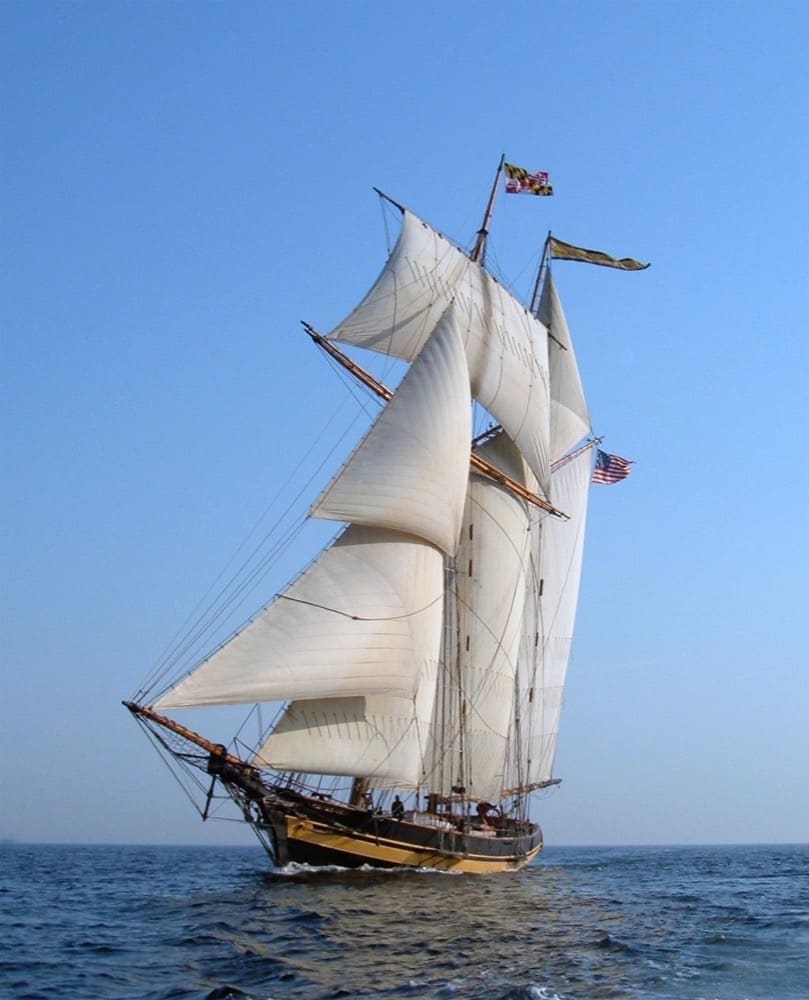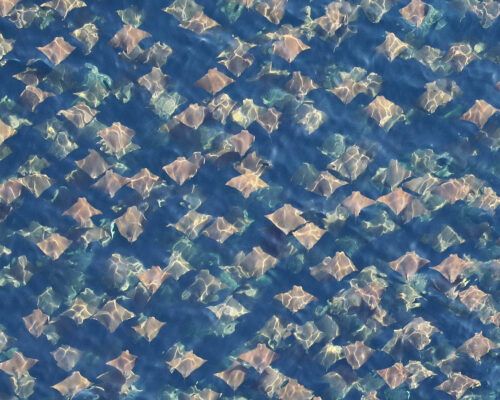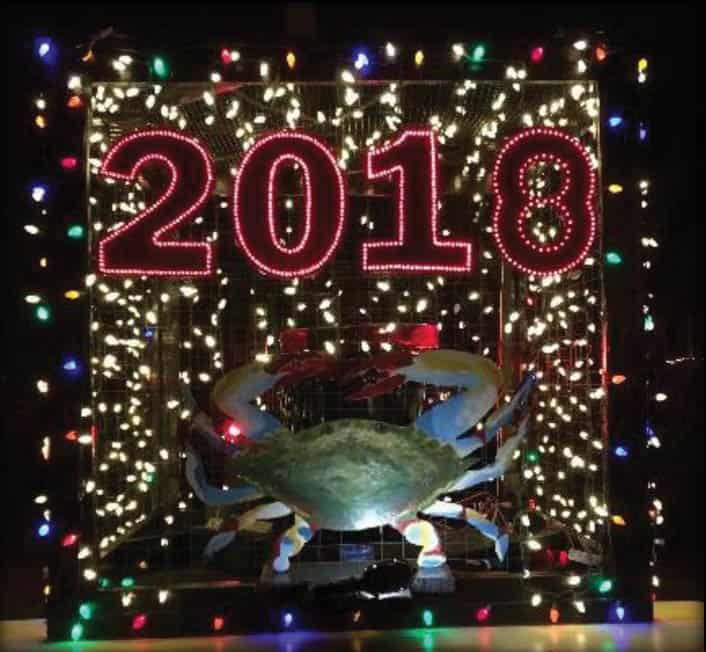Traditions are held dear here in Chesapeake Country. For this holiday issue, we asked our longtime contributors to share their personal rituals that make this season special. We hope their musings will inspire you to pause for a moment in these hectic days, to look around and appreciate this gift we all share, of life by the Bay.
Cookies, Tundra Swans, Pickerel & Friends
When we lived in Annapolis, Christmas always brought visiting friends and family, and sweet treats to feed them. Along with the loved ones and the cookies, the season also brought tundra swans, fresh from their 2,000-plus-mile migration from the Arctic coasts of Canada and Alaska, and the Severn River’s chain pickerel—long, lean predators that seemed to have antifreeze in their veins, defying cold weather by striking lures and flies along the shorelines. The combination made for some memorable days, despite the
cold weather.
Picture a calm, early winter afternoon, with bare trees along the Severn’s tall red bluffs. The tide is low. Our “taxi” might be the Marsh Arab, my canoe, or First Light, my 17′ Whaler, but either way, the vessel will spend most of the afternoon tethered to a fallen log on shore. The trip’s most important components are hip boots or waders, which allow us to be in the river with the swans and the fish. We walk along, side-by-side or within talking distance, casting small spoons, jigs, or flies out diagonally, to work the sun-warmed flats still covered with stubble from the year’s underwater grass beds.
The rootstocks of those grasses are what have brought this year’s swans to the Severn for the winter, just as their forebears have come for several dozen centuries. Two hundred yards away, some 50 swans, including family groups of snow-white adults and light gray cygnets, eye us carefully, then continue feeding, loafing, and napping. A 22″ pickerel tracks my spoon almost to my rod tip. It stops, suspended diagonally in the clear water, and we look each other in the eye carefully. Then it shrugs its shoulders (I swear!), says “Hmpf,” and swims away. I can only smile, chuckle, and cast again.
Meanwhile, my friend Stanley, 30 feet away, lets out a whoop. His rod bends as a twin to my fish runs strongly toward deep water. Stanley carefully leads the lovely green-and-gold fish to shallow water and gently eases the barbless fly out of its jaw. We both smile as it darts away. This is where the Christmas cookies come in. We repair to the shore, to sit on the log anchoring the boat, pull out a trusty stainless-steel thermos, and munch cookies while we contemplate the afternoon light on the river. What a sweet memory!
Walks Among Nature, Then and Now
Every trip around this spinning blue orb, I realize how fortunate I am to live in the Chesapeake watershed. Especially in the time of the global pandemic. The Bay is chock-full of so many outdoor pursuits that if I quit my job today and spent the remainder of my days pursuing them, I’d need three lifetimes to do all that there is to do.
Such end-of-year reflections are not uncommon for me. Looking back on my year in the outdoors, like Frost’s traveler I almost immediately begin to mourn the roads I couldn’t travel. In my younger days, I spent the holidays hunting waterfowl and fishing for rockfish or chain pickerel. The anticipation of the unknown was my favorite part, especially when the trip was made in the inky darkness through the coiled marsh guts of Maryland’s Eastern Shore with my companion, Huckleberry—a crazy-curly Chesapeake Bay retriever—riding shotgun.
I recall another memorable holiday hunt that took place on a picturesque farm creek in northern Maryland. The trickling waters were canopied by massive oaks and birches, and the snow was falling so heavily that soon the creek was enshrouded in a dreamlike whiteness. You heard their calls well before you saw them: the mournful, guttural peals of Canada geese, and the raspy, muffled quacks of mallards.
Those trips are in the rearview mirror, though to be revisited in another form to be sure. These days, as a new (and older) father to a toddler daughter, my outdoor adventures are more subdued, yet frankly more rewarding. My partner’s family lives down on Virginia’s Northern Neck, so we’ve spent the last two Christmases exploring the area’s semi-wild public places. Hughlett Point Natural Area Preserve is one of them. We love the undeveloped beaches, dunes, and upland forests, as well as tidal and non-tidal wetlands. Migratory birds of many different feathers flock here, including several species of waterfowl and songbirds. Bald eagles and northern harriers are fairly common sights. Apparently, the preserve also supports the federally threatened northeastern beach tiger beetle, though we haven’t seen one yet. Truthfully, we haven’t looked that hard.
Thankfully, Hughlett Point Natural Area Preserve has limited parking, so it is not awash in humanity. That makes for a very peaceful walk along the shoreline, where we spy birds (already, my child has a keen eye for raptors and fowl) and inspect each and every seashell of each and every size and shape. So until she’s old enough to be introduced to fishing and wingshooting traditions that are a special part of Chesapeake living, our holiday meanderings through nature preserves such as Hughlett will serve as our small tribe’s new holiday tradition.
An Old (Town) Tradition
Before hyperactive lives and a pandemic virus rendered us online shoppers, I liked to slow things down this time of year. By a century or two. That meant visiting one of my favorite destinations in any season: Old Town, the historic heart of Alexandria, Virginia.
My ideal day in this Potomac River port city begins at its shopping axis, King and Union streets, where block upon brick-sidewalk block of independent stores purvey gifts, clothing, home décor, and numerous things I never knew I needed. It’s where I found the “Got Wine?” ballcap for my oenophile friend at a Virginia-centric gift shop; ornaments for my and others’ trees at the late, lamented Christmas Attic; and a hand-tinted photograph of our favorite waffle eatery at an artist’s studio in the Torpedo Factory Art Center.
My day traditionally ended with a happy-hour pint and oysters on the half shell at Union Street Public House, the ex-colonial warehouse a hogshead’s roll from the riverfront. My husband often joined me for early dinner at The Majestic, whose distinctive neon sign has beckoned food lovers for decades.
Then, while on assignment for this magazine, I discovered how Old Town celebrated the holidays after dark and I was really smitten. A children’s chorus singing “Silent Night” in bustling Market Square. A festive flotilla of illuminated boats parading on the Potomac. Handbell ringers chiming carols beneath lampposts hung with live, red-ribboned wreaths. Candlelight tours of historic landmarks like Gadsby’s Tavern and Carlyle House, a Georgian-style mansion named for the town father who had it built.
I’m not alone in Old Town infatuation. Magazines from Conde Nast Traveler to Oprah to the homespun Pioneer Woman respectively rank Alexandria among the “most festive,” “magical” and “cheerful” holiday destinations.
I’ve missed Old Town recently. Two years ago, we moved in December. Last year, well …. It’s time to go back.
Christmas Oysters
The first Christmas we spent at our vacation house on the Eastern Shore of Virginia, two local men whose families had arrived in the 1600s invited me to “go get some Christmas oysters.” I was honored by the invitation, but unsure what
it entailed.
We waited for a relatively calm day, donned waders, and took a skiff into the marshes. We tonged where the oysters were deep and jumped into the mud with hammers and baskets to harvest oysters that were showing at low tide. As the winter sun waned, we puttered back to the dock, covered in marsh mud, a beer each in our gloved hands, and carrying two full bushels of the freshest wild Virginia oysters imaginable.
My new friends described some as “cats’ tongues” and some as “cups,” but for a guy who had paid $22 for a half-dozen oysters at the Newark Airport a few weeks before, this was an unimaginable bonanza.
We did eat some of the oysters on Christmas Eve, but the real beauty of Christmas oysters is that you have a full bushel and the whole week between Christmas and New Year’s to eat them. The obvious solution is getting together with friends, imbibing some holiday cheer, and creatively figuring out how to eat as many oysters as possible.
My wife, who leaps at the chance to eat her own weight in raw oysters, always invites a friend who was the oyster-shucking champion of Northampton County. Together we eat fried oysters, oyster stew, gumbo with oysters, pickled oysters, and greens-and-oysters gratin, a recipe I invented specifically to use the Yuletide surfeit of oysters.
Now, years later, our vacation house is our permanent residence and Christmas oysters are a tradition. A week or so before Christmas, my wife will ask, “Are you making a plan to go get us Christmas oysters?” And I always do.
Red Snapper on Xmas Eve
It was the centerpiece of the most important meal of the year, glistening orange and silver in a thin broth atop cubed potatoes: a spectacular fish decorated with slices of lemon holding the place of honor on the Christmas Eve table in Highlandtown.
Red snapper, a prince of a fish. The grown-ups oohed and aahed—particularly my Spanish-born grandfather, who liked to say that a man willing to work in America could eat like a king. We kids hated it.
“It was a pretty fish,” said my cousin Donna Alvarez Mislak of those long-ago celebrations on Macon Street. “It was a big deal and I always tried it because my father made me. But I’d rather have a meatball.”
Unlike our Sunday suppers at our grandparents, meatballs were not to be had on Christmas Eve, a fast day from meat for Catholics, particularly those from around the Mediterranean, a stricture still adhered to in the early days of the Second Vatican Council.
Donna’s father, Victor Alvarez, a longtime resident of Cambridge on the Eastern Shore, remembers being a kid, maybe 12 years old, and going to the old fishmarket near the Pratt Street piers with his father (the fish-loving Spaniard) and Mr. Sanchez, a family friend from Highlandtown by way of the Canary Islands.
“You walked through there and you could pick out any kind of fish you wanted,” said Uncle Vic.
My brother Danny also wasn’t fond of it, though he was intrigued. “I think I asked Dad if it was a big goldfish,” he said.
Danny has hosted the Christmas Eve meal at his home in Anne Arundel County for the last dozen years or so, with
no sign of red snapper on his table. But old traditions are sometimes reborn.
This will be the first Christmas Eve that our late father—Manuel R. Alvarez, a big fan of any dish from the sea—will not be with us. And, because of our loss, the first in more years than I can remember that red snapper will grace the table. It won’t be my grandmother’s recipe, but a whole fish, grilled with olive oil and lemon over a fire at Ikaros in Greektown. And those kids, who are now grown-ups, will savor it.




